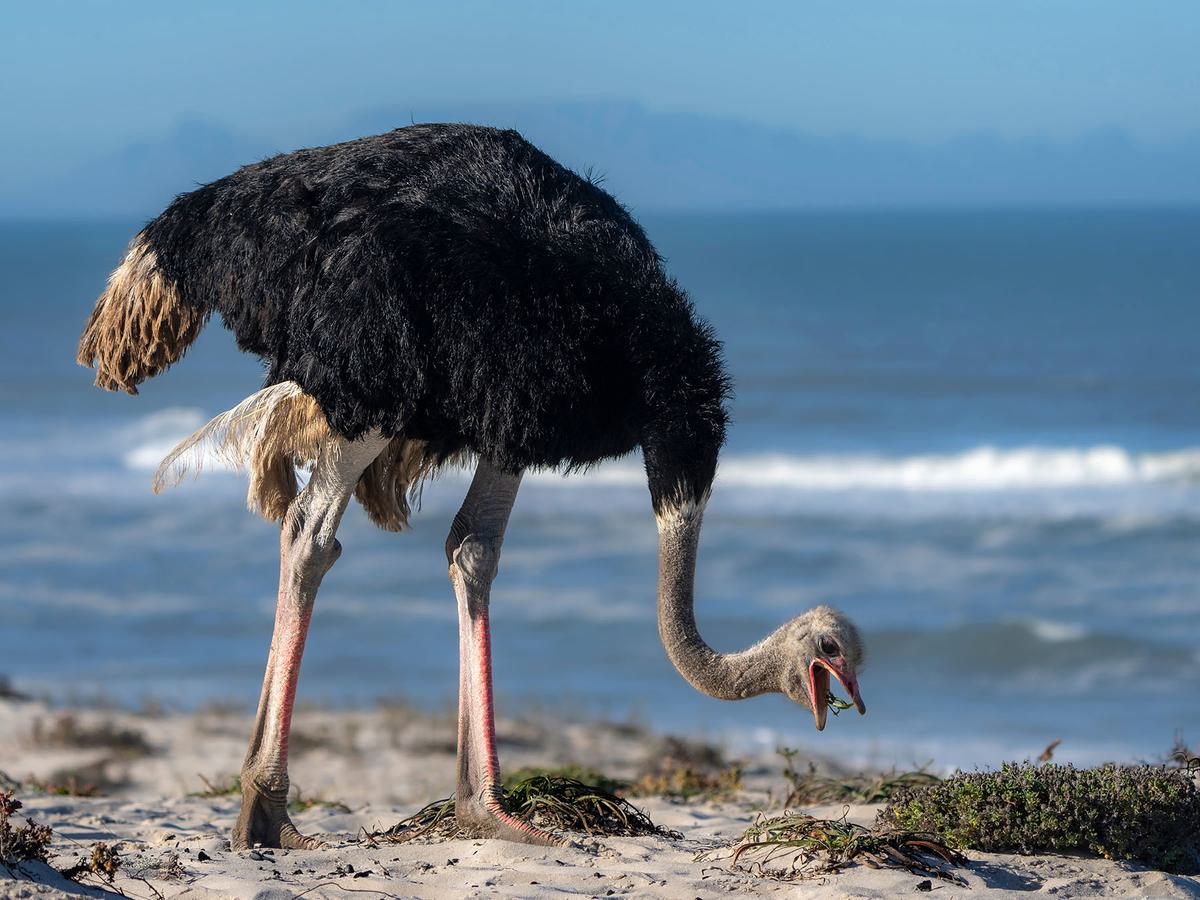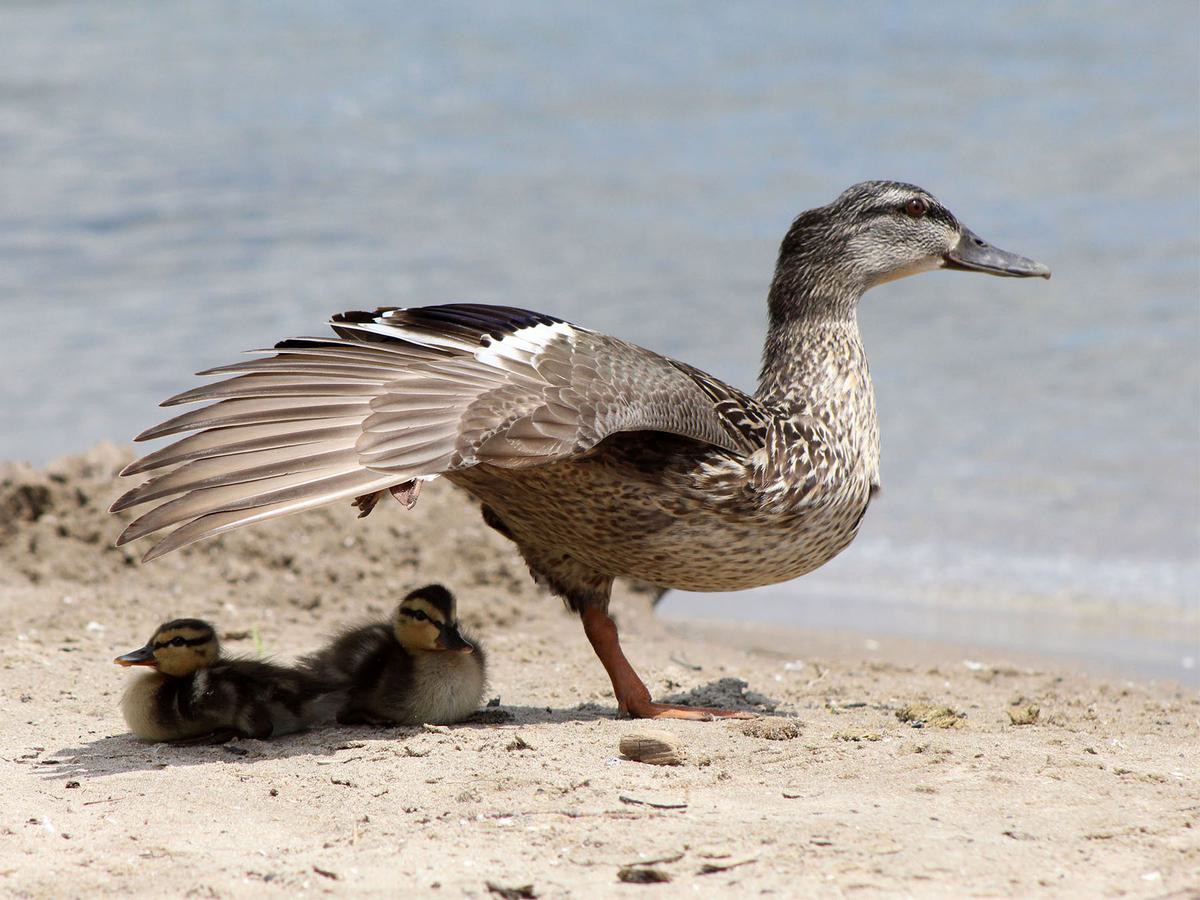Circulatory System

Birds are highly active creatures, capable of explosive speed and incredible stamina. These activities require an advanced respiratory system to oxygenate their blood and an efficient circulatory system to distribute it to the muscles, organs, and tissues where it’s needed.
Like us, birds have a four-chambered heart and a network of arteries, veins, and capillaries to transport blood around the body. However, their circulatory system is specially suited to the demands of their high metabolism and the challenges of life under often extreme ecological conditions.
In this guide, we’ll introduce the bird circulatory system, examine each component, and learn how they all tie together. Read along to discover the amazing inner workings of the avian cardiovascular system!
Anatomy of the Avian Circulatory System
Heart Structure
Birds have a relatively large, four-chambered heart that pumps blood through the circulatory system. The heart is asymmetrical since each chamber of this muscular organ creates different pressure. Pumping blood to the lungs, for instance, requires less power than pumping to the rest of the body tissues.
Chambers of the avian heart
- The right atrium is an upper chamber that receives deoxygenated blood returning from the bird’s muscles and organs
- The right ventricle is a lower chamber that sends deoxygenated blood to the lungs, where carbon dioxide is lost, and oxygen is gained
- The left atrium is an upper chamber that receives oxygenated blood from the lungs
- The left ventricle is a thick-walled chamber that produces high pressure to pump oxygenated blood to the rest of the body
Vascular System
The network of vessels that transport blood through the body is collectively known as the vascular system. There are four different types of blood vessels, each with a different role.
Arteries carry oxygenated blood from the bird’s heart. These large blood vessels split into smaller arterioles and then into tiny vessels called capillaries, which deliver oxygen and other important products to tissues. A network of veins returns deoxygenated blood to the heart.

Birds have a relatively large, four-chambered heart that pumps blood through the circulatory system - pair of Scarlet Macaws
Dynamics of Bird Circulation
Blood Flow Mechanics
The avian heart works by rapid, automatically coordinated muscular contractions that pump blood through two distinct circuits in the vascular system. Blood sent to and from the respiratory system to be oxygenated follows the pulmonary circuit, while blood sent to the rest of the tissues and back to the heart follows the systemic circuit.
Combined, these systems deliver oxygen-rich blood to the body while removing carbon dioxide and other metabolic waste, even during the intense activity of flight.
The pulmonary and systemic circuits match up with different sides of the heart, each separated by a septum that prevents oxygenated and deoxygenated blood from mixing. There is also a one-way valve between each atrium and ventricle to prevent blood from being pumped in the wrong direction.
Cardiac Cycle
The cardiac cycle follows an automatic rhythm of systole (contraction and release of blood from ventricle) and diastole (relaxation and filling of ventricle).
During each cardiac cycle, deoxygenated blood enters the right atrium and then the right ventricle before being pumped into the lungs for gas exchange. The now oxygenated blood then returns to the left atrium, which contracts to fill the left ventricle. Finally, the contraction of the left ventricle sends blood out through the vascular system.
The speed of the cycle varies depending on activity levels but is also highest in small birds. Tiny Hummingbirds, for example, reach incredible heart rates of over 1200 beats per minute, while the enormous Ostrich has a maximum of about 175 beats per minute, which is a little slower than humans.

Hummingbird heart rates can be over 1200 beats per minute - Calliope Hummingbird and a bee
The Avian Heart in Action
High Metabolic Rate
Birds have a relatively high metabolism, which requires a combination of fast breathing, efficient gas exchange in the lungs, and high cardiac output.
Getting enough oxygenated blood to the tissues where it’s needed requires a rapid heart rate, high systolic pressure, and ventricles large enough to push a sufficient volume of blood on each stroke.
Energy and Stamina
The avian heart must pump blood fast enough to deliver oxygen during strenuous activity, but demands can change rapidly depending on the bird’s actions.
Some birds, like Swifts, are built for endurance and require a high cardiac output for extended periods. In contrast, a Golden Eagle in pursuit of prey may go from resting on a perch to rapid flapping flight, which causes a massive increase in heart rate.
Even relatively inactive birds can be highly migratory, requiring long-distance flights twice each year. Interestingly, these birds may develop larger, stronger hearts for part of the year.
In contrast, molting waterfowl lose their ability to fly for a few weeks each year, causing a temporary reduction in heart size.
Thermoregulation and the Circulatory System
Heat Exchange
Birds can lose or gain heat through their circulatory system, where blood flows near the skin, especially in the bill and other parts of the body that are exposed to air, water, ice, or direct sunlight. They manage their body temperature using a variety of behaviors, such as standing on one leg to minimize heat loss or seeking shade to keep cool.
Bird’s legs and feet are particularly vulnerable to heat loss via the circulatory system, but many species have physiological adaptations to manage this problem.
Birds like Ducks and Gulls keep warm even while standing on cold surfaces due to a counter-current heat exchange system where cold blood returning from the feet passes near warm blood from the heart. This equalizes the temperatures somewhat and prevents cold blood from cooling the bird’s core.
Adaptations to Climate
Birds from desert climates must lose heat to survive under extreme conditions, and evaporative cooling is the best solution when shade is not enough. You’ll often see birds panting on hot days, but evaporation around the mouth is not the only way birds cool off.
Some species, like Turkey Vultures and Storks, can cool the blood in their limbs by defecating on their own legs. Research on Inca Doves and Common Quails also highlighted the potential for evaporative heat loss through the cloaca (vent).
While many birds have counter-current heat exchange systems in their legs, some specialized birds have evolved similar systems in their wings.
Penguins have counter-current heat exchange systems in their flippers. These cold-adapted birds also minimize heat loss with a thin layer of fat and highly insulating feathers.

Resaerch on Inca Doves also highlighted the potential for evaporative heat loss through the cloaca (vent)
Blood Composition and Function
Blood Cells
A bird’s blood makes up roughly ten percent of its body mass. This vital fluid is made up of various elements, including red blood cells (erythrocytes), white blood cells (leucocytes), platelets (thrombocytes), and plasma.
The components of avian blood and their functions
- Plasma is the most dominant component and consists primarily of water
- Red blood cells carry nutrients and gasses through the cardiovascular system
- Platelets collect at open wounds to slow or stop bleeding
- White blood cells safeguard birds against illness and infections. There are several types of white blood cells, each with different roles
Hemoglobin
Hemoglobin is an abundant protein found in red blood cells that binds with oxygen diffused through the air capillaries in the lungs.
In terms of numbers, each hemoglobin molecule can bind to four oxygen molecules, and each red blood cell carries about 280 million hemoglobin molecules!
Circulatory Health and Disease
Common Ailments
Birds can suffer from a wide variety of cardiovascular illnesses, including:
- Congenital heart defects (e.g., valve deformations) are reported in a variety of bird species, and severity varies between cases. These conditions may have various causes, including exposure to chemicals or a lack of oxygen in the egg.
- Pulmonary arterial hypertension is a condition reported in poultry farmed at high altitudes.
- Atherosclerosis is a build-up of cholesterol in arteries. It is more common in older birds and is known to affect a variety of common parrot species.
- Blood parasites are common in birds. Plasmodium, or avian malaria, is a common protozoan parasite that is spread by mosquitos. This avian infection can be fatal in some cases, especially in birds that have not evolved in contact with the parasite.
Prevention and Care
Cardiovascular disease can be difficult to detect because it may present in various ways, including labored breathing and low activity levels. Sadly, these ailments are often identified only after a bird has died.
However, pet owners can reduce the risk of cardiovascular diseases by providing birds with a high-quality, species-appropriate diet, an enriching environment large enough for exercise, and by maintaining excellent hygiene in and around their pet’s enclosures.

A small group of Gentoo Penguins diving into the water
Summary
Birds have a lot of heart. Of course, their lives depend on it because maintaining a body temperature well over 100 degrees Fahrenheit and performing high-energy activities like flight requires a constant supply of oxygenated blood to every organ and muscle.
Different habitats and lifestyles place additional demands on the avian cardiovascular system, but birds have overcome these challenges with special adaptations for extreme cold, heat, and impressive migrations.
Ongoing research into avian physiology and systems like the circulatory system helps us understand birds better. By studying risks like cardiovascular diseases and the dangers of a warming climate for desert species, we can make better decisions for their conservation and management now and into the future.


